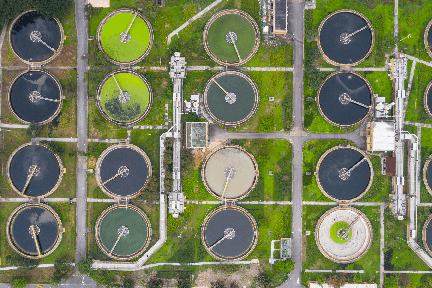After sources of water come from rivers, lakes, and springs, they are taken to the water treatment plants to begin the purification process. From there, it will go through the water treatment process to get rid of bacteria and viruses through filtration and disinfection stages.

The water begins to get distributed into homes and buildings through distribution systems once it has been purified and declared as safe drinking water. The municipal water distribution system is comprised of components designed to carry quality water from the main supply network to homes and buildings with sufficient pressure. The components of a water supply system include pipes, valves, pumps, storage tanks, and other accessories.
When designing these systems, there are various factors to consider such as pressure, cost, maintenance strategy, and the length of pipe required. The system needs to be designed in such a way that the water supply is not disrupted during any maintenance work, it must not compromise the quality of water being distributed and it must also be tight and secure to prevent leaking. In addition, these systems must be able to supply the required amount of water used during firefighting emergencies.
The municipal water distribution system is comprised of components designed to carry quality water from the main supply network to homes and buildings. Factors such as cost, strategy, and pressure requirements are taken into consideration when designing these systems. The four types of water distribution systems include: dead-end, grid iron, ring, and radial.
Different types of water distribution systems are adopted in areas to supply water; and are dependent upon the pressure requirements, operation and maintenance strategy, cost, and overall length of the distribution system. There are four types of municipal water distribution systems: dead-end, grid iron, circular, and radial.
The dead-end water distribution system is where the main pipeline runs through the central part of an area. It is also referred to as the tree distribution system. The sub-mains branch off from both sides of the main and are divided into several different branch lines. In this system, pipes can be laid easily. This system is often found in older towns and cities that don’t have definite road patterns.
The grid iron water distribution system has no dead ends because the main, sub-mains, and branch lines are all interconnected. While the main water line runs through a central area, the sub-mains branch out at right angles and the branch lines connect to the sub-mains. In this system, water will continuously flow without any stagnation or sediment deposits. Maintenance in the grid iron systems can be easily done by closing the cutoff valve; it will not affect any other users. This system is ideal for cities with a rectangular layout resembling a gridiron.
The ring water distribution system (also referred to as the circular distribution system) is where the main water supply line is formed around the area of distribution, essentially formed as ring. The branch lines are projected perpendicularly from the main line as well as to each other. In this system, there is no stagnation of water, and the larger water network won’t be affected when repair work is done. This allows for every street in an area to get a sufficient amount of water. This system is ideal for areas that are well-planned.
The radial water distribution system, unlike the ring water system, is when an area is divided into small distribution zones. Each zone receives its own centrally located, elevated reservoir where pipelines are laid radially to the surrounding streets. The reservoir is then connected to the main lines that pass through the center of an area. In this system, water is distributed at high pressure and velocity. This system is ideal for areas with radially designed roads.
Learn how Merit’s products are used throughout the municipal water system by visiting our page.
LEARN MORE ABOUT THE MUNICIPAL INDUSTRY
Author: Hedy Francescangeli, Merit Brass Marketing Coordinator
SOURCES INCLUDE:
3/28/2025 1:50:52 PM